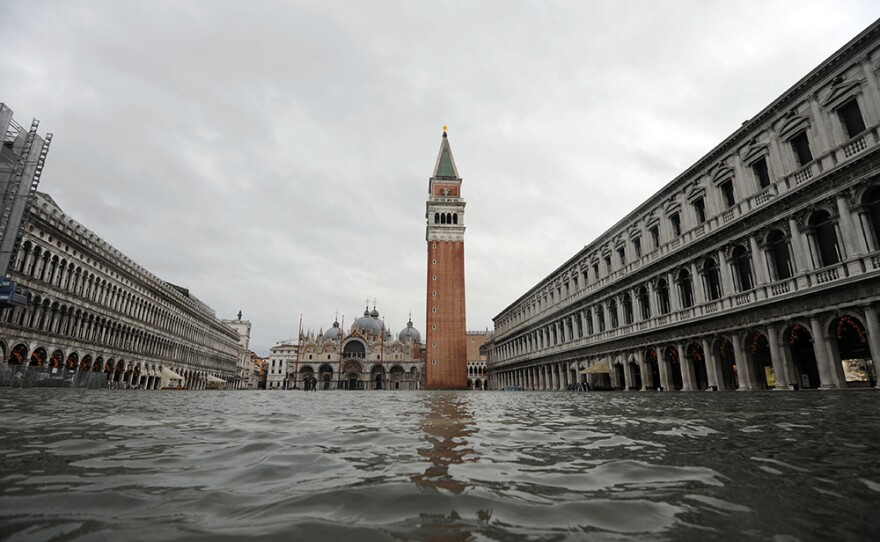Thursday, Oct. 26, 2023 at 9 p.m. on KPBS 2 / Stream now with the PBS App
NOVA "Saving Venice" chronicles the fight to preserve the Italian city from rising sea levels and the increasingly frequent extreme flooding events. Venice is an ancient city whose architecture, design, and way of life transcend the tourist hype, and is home to famous sites such as the Rialto Bridge, the Doge’s Palace, and the Basilica San Marco. Even more iconic than those sites are Venice’s waterways — comprising 150 canals. Being built so close to the water line, Venice is now one of the cities most at risk from rising sea levels. Scientists and engineers work together to create protective barriers to battle forces of nature, to save the historic city for future generations.
After nearly 20 years of construction and some $8 billion dollars, the city has created a system of enormous flood barriers called the MOSE, designed to stop rising water levels before they reach the city. Seventy-eight individual gates are arranged in four barriers that each stretch over 1,100 feet across the inlets to the lagoon. The enormous gates, each the size of two tennis courts, join to block the high tide. The MOSE is still in its testing phase and it needs to work perfectly in order to save the city from any flooding. Oceanographer Georg Umgiesser, who has been studying Venice’s tides for almost 40 years, is responsible for tracking conditions that could cause sudden, extreme floods, known as Acqua Alta, and alerting Venice officials when such tides are on the way.
During the past 150 years, Venice has experienced 18 of these exceptional high tide events — classified as water level higher than 140 centimeters–seven of which hit the city in the past three years. As weather patterns change around the planet, the storm systems that drive these events are becoming more frequent. Umgiesser and his team remain vigilant as he says, “Venice is a special city. We have to protect it because otherwise generations will lose their history.”
In addition to the efforts of engineers, Venice has natural methods of protection that are also being fortified to work alongside the MOSE. The salt marshes, which naturally grow along the barrier islands, are home to certain plants that help keep the soil higher. Historically, Venetians had a close relationship with the environment.
Now, Venice’s shallow tidal lagoon, mudflats and salt marshes are in decline due to erosion from ships. Two-hundred years ago there were nearly 70 square miles of salt marsh, but now there are just 16. Coastal researcher Luca Zaggia is worried about the city and its lagoon, saying, “We must be correct with the environment because we inherited it from the past … and this is what protects Venice from further damages.” Since the 1970s, erosion has caused the lagoon to become more than three feet deeper, causing the threat of flooding to rise.
RELATED: Saving Venice From the Sea By John Keahey
Watch On Your Schedule:
This episode is available on demand on all station-branded PBS platforms, including PBS.org and the PBS App, which is available on iOS, Android, Roku, Apple TV, Amazon Fire TV and Chromecast, for a limited time.
Extend your viewing window with KPBS Passport, a benefit for members supporting KPBS at $60 or more yearly, using your computer, smartphone, tablet, Roku, AppleTV, Amazon Fire or Chromecast. Learn how to activate your benefit now.
Join The Conversation:
NOVA is on Facebook / Instagram / @novapbs on Twitter #NOVAnext





